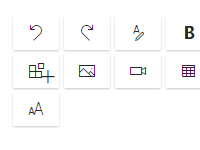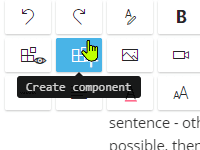
Creating work instructions? What the experts say

We asked several industry experts for their thoughts on what exactly makes good work instructions? One topic, in particular, proved itself to be particularly important to everyone who participated in the discussion. Who exactly should be creating work instructions?
Choosing who writes your work instructions will have a big impact on how well they are received and iterated upon. But across the board, all of our experts agreed that there really is only one role in a position to effectively write your work instructions. The person who is doing the work. Below you will find several beneficial perspectives on why it is that operators do a better job creating work instructions than management, how to choose which of your operators is best suited to creating work instructions, and valuable insight and tips on doing this yourself.
“Creating Work Instructions is a task for the workers”
“The only people who can write work instructions are the people who do the job. Managers usually have no idea what is going on. The job of QA is to facilitate the writing and then to audit to make sure the work instructions (once written, agreed and approved) are followed.”
– Peter Krafft
“Workers should have support from QA when producing work guides”
I typically facilitate and advice during work instruction preparation in order to assure that work instructions contain accurate, easy to understand steps, that include as many pictures as needed to convey the intent; inform the user of any possible safety concerns and supply adequate objective quality evidence that customer-critical attributes are monitored and recorded.
My facilitation of work instruction preparation allows me to provide my company with a truncated timeline, effectively eliminating the write-review-comment-rewrite, re-review, repeat the process. It’s all about speed and minimal disruption, which translates into a better bottom line.”
– Craig Wesson

Try Gluu for free
Sign up for a 30-day trial.
No credit card required.
“Different scenarios call for involvement with different roles”
“Work instructions must involve the process operators, tradesmen, and/or professionals. Depending on the situation, different levels of facilitation can aid in the development of the instructions. In my company, the Engineering department tends to write their own instructions. On the plant floor, Quality, Manufacturing Engineering, and product specialists tend to write the work instructions as they work with the personnel who perform the operations.”
– Gray Warner
“Work Instructions should be produced and maintained by the experts of that process”
“Ownership of documentation that resides in the hands of those who are the process experts will drive more personal buy-in to keep your system up to date. I recently had this discussion with a colleague and the question was asked, “Who should own this document, Engineering or Quality?” My response was this: “Who is the process expert, and who do you want to review the document periodically to maintain currency?”
– Todd Hanlin
Examples features of work instructions

Create work instructions and SOPs
Add text, images, video, links and files to any activity in any process. This lets you show why and how work is done.

Turn instructions into reusable components
Mark a content selection to turn it into a component that can be reused by others.
“Effective works guides are built by the team involved in that job”
“An effective work instruction can only be created by the team involved in the job. Their experiences on the success and failures contribute to effective and practical work instruction.”
– Rishard Fallil
“Operators should write Work Guides with reviews from stakeholders”
“What I have done in the past is to gather all those who will be actually using the instruction. Start with a basic flowchart, step through the process at a very high level with inputs from the operators. If you are creating text, then the flowchart activities can be your sections. Under each section provide the details. When you think you have it, gather the leadership (those responsible if the person using the instruction fails) and review it with them. There may be some key information that not everyone may be aware of. I have found that 2-3 iterations with the “operators”, and another 1-2 with the stakeholders, you should be ready for approval.”
– Mark Christy
“Creating Work Instructions gives you responsibility for your process”
“There are different degrees of involvement – I have talked with many companies where it is equal to letting people sign off that they have read the instructions. This often leads to educated people wanting to challenge what is written and “prove it wrong”. The benefit of facilitating and letting people write their own work instructions by themselves is that it becomes a matter of integrity whether they are followed or not. “If I don’t do what I said, then I have an integrity problem” – this is hard to cope with – even for the occasional troublemaker.”
– Søren Pommer
“Draft an initial draft with an individual worker then see how the rest respond to this documentation”
What I have found to be effective is to work with one person and write up an initial draft work instruction document based on this person’s view of how it should be done. Once I have their agreement that what is written is correct, then go and visit other people who do the same job on the other Shift Crews and ask for their comments on what has been written. It is very rare to encounter a situation where everyone agrees with the first draft.
When a point of difference is mentioned by one person, I then ask for the reasons as to why they disagree. If their reasons seem relevant, then I go and check out the details of what they said. Based on this input, changes are made to the draft document and I go back to the first person I was working with for their views on the changes. It is rare that they would completely discard opposing views without thought. Sometimes they would respond “well, I never knew that. I guess I have been doing it wrong all along. I will change to do things this way in future.” Eventually, all these different people who had never met would be doing things the same way and in many cases, the customer benefited from the improvements and fewer mistakes were being made during the manufacturing process.
“The aim is for your operators to have ownership over these processes”
“What really pleased me one day was when a Super Quality Guru from way high up in the company came to review our systems, etc., and he asked the Operators about the work instruction manuals they had on the shelf “who owns these? and where did these come from?” The operators replied, “They are ours and we wrote them.”
The initial approach and the company culture will have a major effect on the success of this kind of project. If it is introduced, not so much as a decree, but more of a “we need your help to do this and this is the reason why we need to do it”, makes a big difference. When it gets to the stage where QA merely facilitates what they want to do, then you have really achieved something.”
– John Mercer
Convinced that work guides or instructions should be curated by their operators? Check out our guide to work instructions, it will help you plan, implement and iterate on your work instructions efficiently.
All responses have been edited for the purposes of this article. This article was first published Oct 15, 2015 and updated on July 14, 2023

Try Gluu for free
Sign up for a 30-day trial.
No credit card required.
Frequently Asked Questions
A combination of different tools and software can be utilized to create effective work instructions. This often includes diagramming tools like Microsoft Visio for creating detailed flowcharts, and document creation software like Microsoft Word or Google Docs for constructing the textual part of the instructions. A more advanced approach may include using specialized instruction designing software like StepShot, which not only allows you to craft comprehensive guides but also automate the process. Even video creation tools like Screencast can also be employed for making video-based instructions for more complex tasks.
The frequency at which work instructions should be updated or revisited generally depends upon several factors including the nature of work, industry standards, and any changes to the work process itself. However, as a best practice, a company should typically revisit work instructions at least once a year. Changes in technology, process improvements, or the introduction of new machinery or software can necessitate a review of work instructions even more frequently. It’s crucial that these instructions stay current and relevant to ensure that employees can perform their jobs efficiently and safely.
Certainly, effective work instructions are clear, easy to comprehend and inclusive of necessary details, like step-by-step guides for operating a software program with screenshots. Conversely, ineffective instructions are typically ambiguous, overly technical, and lacking crucial specifics. For instance, assembling complex machinery without providing diagrams or clear instructions can lead to errors and mishaps. The transition from ineffective to effective instructions enhances efficiency, productivity, and safety in the workspace.
About the Author






